The business world is changing fast, and if you’re reading this, it’s probably because you’ve been paying attention.
Digital technologies have arrived in force, but the shift taking place isn’t just about new tech, it’s about new expectations. Customers, be they business-to-business solution purchasers or consumers, have become so comfortable interacting with solution and service providers via digital channels that organizations must adapt to keep up.
Now that people are used to tracking every part of their lives on their phones, they expect that same type of visibility and simplicity from businesses. If a client calls you asking for an estimate on a project, and you can only give them a vague idea of what to expect, they’ll go to a company that can provide better service.
Enter project management software. Modern project management software lets you
- Track projects in real time
- Estimate delivery dates and costs
- Optimize scheduling and resource allocation
- Anticipate project demands
- Customize access settings for optimal collaboration
- Create visibility into tasks
- Report on micro- and macro-level trends
By digitizing how you track and manage projects, you can gain the kind of flexibility and transparency customers demand. What’s more, cloud solutions make it easier than ever to attain this functionality.
The cloud is becoming the default method of launching project management software. Businesses flock to it for its easy accessibility, cost effectiveness, and flexibility. If you subscribe to cloud solutions, and something isn’t working, you can just switch subscriptions. You don’t have to pay a huge upfront cost that makes changing down the line unrealistic.
According to Transparency Market Research, the global market for online project management software will expand at a compound annual growth rate of 9.4 percent from 2018 to 2026, reaching a value of $6.68 billion. The research showed that businesses are moving quickly to adopt cloud-based project management solutions delivered online, because the technology
- Helps convert broad strategies into actionable plans
- Gives project managers real-time dashboards and reports to better understand progress at any time
- Provides detailed visibility into costs so teams can reduce day-to-day expenses
These core benefits are driving businesses to adopt the technology, but what is the best project management software for your business?
We can’t answer that question. Nobody knows your company like you do. But we can help you make your decision. That’s what this guide is all about. We’ll dive into why project management software has become so important to businesses, the key benefits of the technology, the different types of solutions and features available in the sector, and which vendors are leading the industry.
With this information, you’ll be better equipped to start your search for project management software. Identifying the right solution for your business is generally a matter of matching your specific needs and use cases with what different vendors offer.
In following sections, we’ll explore some of the top solutions on the market and offer a rundown of what makes them unique. You can always explore further at each solution’s website, get a demo, or check out extended reviews. We hope you come away with a rough idea of which solutions you’re most interested in so you can do some deeper analysis on your own.
1. Basecamp
The Basecamp project management software suite is designed to provide businesses with a great entry point into the industry. It provides the essential features most companies need in an accessible, easy-to-manage package. It’s specifically designed for the organization that’s been getting by without PM software for a while and is drowning in a sea of emails, scattered documents, and seemingly constant panic to keep up with everything.
Basecamp is especially notable because of its simple and streamlined interface. You can create to-do lists, message boards, and schedules with ease. You can leverage communication tools, check in with teams, and customize the elements of the interface with a few clicks of a mouse. The software is all about simplicity and accessibility, both in terms of how it’s designed and what it hopes to do for your business.
2. Teamwork
As its name implies, Teamwork project management software really homes in on the experience of working in a team and getting people on the same page. Where much of the language Basecamp uses to describe itself emphasizes how it impacts your entire business, Teamwork focuses more on the kind of clutter and overhead that disrupts collaborative projects. Its goal is to get all of the details out of the way so employees can spend their time getting stuff done, not managing administrative details.
To deliver on this promise, Teamwork actually offers a full suite of products that can work in conjunction with one another to drive efficiency across your business. Its project management module focuses on eliminating complex barriers in collaboration, giving teams the freedom to work however they want without sacrificing transparency, and making it easier to scale a business without sacrificing performance.
Teamwork also offers customer relationship management, document management, and help desk software solutions.
3. Trello
If Basecamp is all about simplicity and organization, and Teamwork is all about flexibility and communication, then Trello project management software is the solution that’s all about minimalism and fun. The software takes many of the organizational concepts of typical PM software solutions and breaks them down to the bare bones.
Trello uses boards, lists, and cards as its primary organizational tools, letting you organize tasks and projects into those categories for quick visibility into what’s going on. In many ways, the solution is based on the Kanban framework to allow for easy visualization.
This streamlined organization method combines with an intentionally playful interface and visual design to create a more laid back way to organize projects, manage teams, and collaborate. This doesn’t mean there isn’t room for customization and powerful reporting. It’s just that Trello focuses on the most straightforward, no-fuss way of getting things organized along the way.
What’s more, there is a Trello-Jotform integration. You can use our Form Builder to embed forms into cards and other organizational elements in Trello so that you can not only track your projects better, but also ramp up how you leverage custom forms in your day-to-day work.
4. Asana
Asana project management software stands out for its focus on ease of use and customization. The solution organizes work primarily around goals, projects, and daily tasks. It features an interface with many drag-and-drop features, letting your teams easily update one another on projects, make changes to schedules, and tweak how everything is organized based on what works for them.
Like Trello and Basecamp, Asana features a fairly minimalist interface that focuses on making the most important information available so users don’t get bogged down trying to keep track of all of the details at once. Instead, the essential information is presented, and users can dig down to get to any other information they need, all within the app.
Asana is another solution that we’ve integrated with. Asana-Jotform integration stands out in particular because it lets users pull information from the forms they created using Jotform and incorporate that data into tasks and reports as needed.
5. Zoho
Zoho is a bit different than the other solutions we’ve mentioned. The solution provider got its start in customer relationship management (CRM) technology. In many ways, CRM software does similar things to PM solutions, as it organizes data based on user roles and tasks, provides reporting functionality, and gives team members visibility into the work they need to do. The difference is that CRM solutions are primarily built for sales teams and are meant to serve as data repositories for account-related details.
Zoho project management software builds on this framework in the form of the brand’s Workplace platform, a solution designed to integrate a variety of project-focused tools into one place. Zoho offers more than 40 business applications that drive productivity in some form. They can be mixed and matched so you get the functionality you need.
Pro Tip
As a sidenote, Jotform has integration with Zoho CRM, which makes it easier for brands to create stronger user experiences by allowing them to capture key user information in custom forms that align with operational needs for various tasks.
6. Jira
The Jira project management software solution is built specifically for development teams using agile strategies. Jira is based on the foundational idea that software teams operating at their best are not only able to ship production-ready solutions out to users early on in the project lifecycle, but can maintain that pace over time.
With its focus on agile methods, Jira organizes projects starting with a plan phase built around creating user stories, setting up sprints, and distributing tasks. It has dedicated tools for tracking progress and ensuring prioritization, managing the release process, and reporting on performance through data visualization.
In some ways, Jira can seem more complicated than some of the other solutions we’ve discussed. This is especially true at first glance. However, the fact that it’s built specifically for a highly technical audience and for particularly complex, agile projects makes that complexity necessary. It still offers a clean and accessible interface; it just doesn’t go to the same extreme minimalism as some of the other platforms we’ve highlighted.
7. Jotform Tables
Tables-oriented software is the “new kid on the block” for project management. It offers attractive, cross-functional features that can meet a variety of needs. Jotform Tables is unique because it automatically populates a table with the form and survey data your enterprise collects. This transforms your data into an effective project management tool that includes all-in-one workspace capabilities.
With applications across multiple industries and user skill levels, Jotform Tables is a user-friendly solution. Users can track the progress of tasks, collaborate with their team, perform complex calculations, analyze data, and visualize projects with a dedicated Report Builder that keeps everyone on the same page.
With free project management templates, you can organize and manage any type of project in one place and/or customize templates to suit your needs.
Finding the right solution for you
There are a lot of factors you’ll ultimately need to consider before choosing PM software. Price may be a major issue limiting your pool of options. One thing you may have going for you, though, is the fact that many of the solution providers we just discussed offer demos or free trials so you can get a feel for how they work. Sometimes, you don’t really need feature lists or descriptions of brand ideals — you just need to get in the trenches and work with a solution.
Why use project management software
If you’re running a business or leading a team, you’ve likely noticed how expectations around speed and efficiency have skyrocketed. With millennials dominating the workforce, their digital fluency has reshaped how work gets done.
Think about how you plan a vacation. You book flights, hotels, and activities online, switching between apps with ease—far more convenient than dealing with paper tickets and travel agents. So why doesn’t that same seamless experience exist in many businesses?
That’s the driving force behind digital transformation. If you can book a flight and instantly receive hotel recommendations, why do workplace projects still require endless email chains, spreadsheets, printed contracts, and manual approvals?
New digital tools aren’t just about convenience; they’re redefining how fast and efficiently work happens. While innovation often starts in consumer tech, businesses are now feeling the pressure to keep up—or risk falling behind.
Project management software is at the heart of this shift. It streamlines workflows, giving leaders a high-level view of projects while enabling teams to track tasks and stay aligned.
But what exactly is project management software?
At its core, it’s a platform that organizes and delivers information to the right people at the right time. It helps teams avoid delays by keeping everyone informed about responsibilities, deadlines, and progress.
This is a big task, and the right software makes all the difference. Next, let’s look at real-world examples of how businesses use these tools to stay ahead.
How project management software works in various settings
In a typical setup, project management software allows managers to
- Establish the specifications of a project
- Assign stakeholders to the specific tasks relevant to their roles
- Track total time and resources devoted to the project
- Document project milestones for easier reporting and updates to customers
PM software also
- Automates notifications so that when one team member finishes a task, the next knows they can get started
- Provides near real-time visibility into the status of the project
PM software structures projects into phases, often customizable to fit specific workflows. Project managers get a high-level overview, while individual contributors receive task-specific updates, reducing information overload. Additionally, built-in collaboration tools minimize the need for multiple apps, making project execution more efficient.
1. PM software in construction
Imagine a small construction firm handling property repairs and single-family home builds. Managing estimates, materials, schedules, and customer communication can be overwhelming. PM software helps by:
- Creating new projects upon signing a contract, detailing specifications and requirements.
- Generating purchase orders, work orders, and invoices, keeping everything organized.
- Automating scheduling based on material delivery and worker availability.
- Notifying employees about tasks, locations, and required supplies.
- Providing real-time updates, ensuring smooth coordination between teams.
For instance, a contractor needs to order specialty lumber, rent equipment, and schedule a team for site cleanup—all within two weeks. PM software integrates these steps, updating schedules and notifying workers when tasks are ready. This prevents paperwork bottlenecks and streamlines communication, enabling projects to stay on track.
2. PM software for business services
For industries like IT services, marketing agencies, and consulting firms, project timelines and transparency are critical. PM software supports:
- Defining project scope and assigning responsibilities.
- Attaching relevant documents, meeting notes, and reference materials.
- Automating notifications to keep workflows moving efficiently.
- Scheduling work to align with dependencies and team availability.
- Providing client visibility into project progress and deadlines.
- Analyzing performance to identify process improvements.
One major advantage is post-project analysis. Businesses can assess:
- Project alignment – Were deliverables met?
- Schedule adherence – Did the team stay on track?
- Workflow bottlenecks – Where were the delays?
By tracking trends, companies can refine operations, improve client relationships, and address inefficiencies in scheduling, training, or interdepartmental collaboration.
3. PM software in development/programming
For development teams, PM software enables operational efficiency and provides valuable data-driven insights. Key benefits include:
- Tracking performance metrics to identify team workload and efficiency.
- Generating reports to analyze project success and recurring issues.
- Identifying root causes of missed deadlines and workflow disruptions.
For example, a company struggling with delayed software releases can use PM reports to determine whether the issue lies in staffing, testing procedures, or poor scheduling. Instead of guessing, leaders can make informed adjustments, such as refining QA processes or optimizing project timelines.
Benefits of project management software
Many of the reasons for using PM software point to its benefits. That said, there are four key benefits that we mentioned in the last section but didn’t specifically unpack in detail.
1. Task management
In some ways, you can think of PM technology as project task management software. Any project comprises a collection of tasks that users need to complete. A customer manufacturing project, for example, may be made up of such tasks as
- Creating a sales quote
- Signing a production contract with a client
- Analyzing available materials compared to what needs to be ordered
- Determining which vendors are best positioned to provide the assets you need when you need them
- Filing purchase orders to obtain materials for the project
- Receiving the order and storing goods in the warehouse
- Scheduling production based on availability of equipment and workers
- Picking items from the warehouse in time to start production
- Inspecting materials for defects prior to assembly
- Running various work orders to create component parts and combine them
- Inspecting the final asset prior to closing out production
- Preparing the item for shipment and moving it to the warehouse
- Scheduling pickup with your shipping service
- Delivering the item to the client
- Collecting payment
This is just a glimpse of the many steps involved. Without a structured system, managing these tasks can become overwhelming. PM software helps by providing real-time visibility into task ownership, deadlines, and progress. Instead of manually tracking delays, managers can quickly identify bottlenecks, such as supply chain issues or equipment malfunctions, and take immediate action.
2. Communication
Workplaces have evolved, and so have communication methods. With remote work, flexible schedules, and increased reliance on contractors, traditional communication via email and phone calls can be inefficient. PM software simplifies communication by offering:
- Automated notifications and alerts
- Built-in messaging, email, or voice conferencing
- Real-time collaboration on shared documents
- Centralized access to important resources like contracts and guidelines
By acting as a communication hub, PM software ensures that teams stay aligned, reducing the risk of missed deadlines and misunderstandings.
3. Project tracking
PM software provides robust tracking tools that allow managers to monitor progress beyond daily task completion. Some valuable insights include:
- Assessing if teams meet deadlines across multiple projects
- Identifying clients who frequently request mid-project changes
- Analyzing project trends to allocate budgets and staffing effectively
- Calculating time and cost allocation for improved profitability
With real-time tracking, businesses gain valuable data that helps streamline operations and optimize resource allocation.
4. Scheduling
Scheduling can be one of the biggest challenges in project management. PM software simplifies the process by:
- Providing an overview of team availability
- Filtering out unavailable employees
- Assigning tasks based on skills and project needs
- Optimizing resource allocation for upcoming contracts
For example, managers can quickly identify and schedule qualified employees if a project requires specialized technical expertise. Some PM software solutions even offer predictive scheduling, helping businesses determine whether they have the bandwidth for new projects or need additional resources.
The primary benefits of PM software can vary depending on the specific solution you purchase. For example, one vendor may build a platform specifically addressing scheduling pain points for creative teams while another emphasizes task management for developers.
However, most project management software is more general and can be applied to a wide range of work settings while still offering the benefits mentioned above. There are a few distinct types of project management software that vary dramatically from one another.
Types of project management software
Finding the right project management (PM) software can feel overwhelming. The market is packed with options, each offering a core set of features with specialized tools for different audiences. However, most solutions fall into one of four major categories:
1. Desktop project management software
Desktop PM software runs directly on a local computer or an on-premises server, with data sometimes stored on internal servers for user collaboration. Once the standard for project management, it has largely been replaced by cloud-based alternatives due to its drawbacks:
- High upfront costs – Requires purchasing software licenses and possibly upgrading hardware.
- Customization demands – Often requires developers and consultants to fine-tune the system to fit specific business needs.
- Complex setup – Once installed and configured, companies often feel locked into the system for years.
This type of software is best suited for businesses with strong IT teams that need complete control over data and security. However, modern cloud-based solutions tend to offer more flexibility and accessibility.
2. Cloud and web-based project management software
Cloud project management software delivers its functionality through the web. Users visit a cloud-based PM software, which is the most common choice today. It operates via the web, allowing users to log in from any device with an internet connection. All data is stored in third-party data centers managed by the software provider.
Pros:
- Anywhere access – Work from home, in the field, or even on vacation.
- Lower upfront costs – No need to invest in costly hardware; pricing is usually subscription-based.
- Flexibility and innovation – Most cloud-based tools receive frequent updates and allow users to request new features.
Cons:
- Data security concerns – Requires trusting a third-party provider with sensitive information.
- Internet dependency – Performance can suffer from weak connections, though some tools offer offline functionality.
The widespread adoption of cloud PM software has spurred innovation and made powerful project management tools accessible to businesses of all sizes.
3. Agile project management software
Agile PM software isn’t defined by its delivery method (it can be cloud-based or desktop), but rather by its focus on Agile methodologies. These tools are designed for teams that use Agile frameworks like Scrum or Kanban, commonly found in software development and IT operations.
While most PM software can be adapted for Agile workflows, specialized Agile PM tools provide a more seamless experience with built-in sprint planning, backlog management, and team collaboration features. If your business follows Agile principles, using software designed specifically for Agile can streamline processes and improve productivity.
4. Open-source project management software
Unlike traditional PM software, open-source solutions provide access to their source code, allowing businesses to customize the platform to fit their exact needs.
Advantages:
- Highly customizable – Modify the software as needed without vendor restrictions.
- Lower costs – Many open-source options are free, though some require a licensing fee.
Challenges:
- Technical expertise required – You’ll need developers to configure, maintain, and update the software.
- Complex implementation – Setup can be time-consuming and resource-intensive.
Open-source PM software is a great choice for organizations with strong IT capabilities that need a fully tailored solution. However, for companies without in-house technical expertise, a commercial PM tool may be the better route.
What’s my best option?
These four methods represent the most prominent delivery models or formats for project management software.
As the industry has evolved, many solutions have started to focus on the cloud and agile segments, but you’ll still find options elsewhere, particularly if you want open-source software. The key to choosing the right option is to be honest with yourself about your needs. It may be tempting to get a fully custom system or have full control of your data at all times, but you’ll be making real sacrifices to get those advantages.
Meanwhile, the flexibility and scalability of the cloud are great, but the long-term costs can add up as you pay subscription fees every month. Take some time to analyze what’s realistic with your budget and go from there.
The cloud has become the de facto option, but knowing where you stand and why can help you determine the best delivery model within the cloud and help you choose a vendor if you do go that route.
Exploring your needs more deeply in terms of the delivery of PM software can also help you gain insight into the features you need from the technology. The industry is filled with highly nuanced, specialized solutions, but a few key feature types have emerged as standard things you should look for. We’ll talk about those next.
Features of project management software
We won’t get into the nitty gritty details of what various project management software provides. Because so many solutions out there have specific capabilities and deep feature sets that differ only slightly from one another, it isn’t really helpful to go through them all.
If you’re looking to understand project management software features so you can choose a solution that’s right for your business, then you’re better off understanding the major standard features that most solutions offer so you can focus on determining what else various platforms offer.
With this in mind, here’s a look at five of the most common, critical features of any project management software.
1. Mobile connectivity
If you’re embracing digital tools to help your team work smarter and faster, there’s one major hurdle you can’t ignore: mobile access.
Picture this—you get an urgent call from a high-value client demanding a project update and a scheduling change. You need your project manager to log in and adjust the plan immediately. But they’re out of the office, away from their computer, and unable to access the system. Without mobile project management, you’re stuck, leaving both your team and your client frustrated.
This might seem like an extreme case, but work habits are shifting. Employees want the flexibility to handle small tasks during their commute or check in on projects while grabbing coffee. Giving them mobile access isn’t just a convenience—it’s a necessity.
But not all mobile solutions are the same. Some apps offer the full functionality of their desktop versions, while others fall short, leaving you with limited capabilities when you need them most. Before committing to a platform, make sure its mobile version delivers everything your team needs—so you’re never caught off guard.
2. Document management
Document management is a core feature of any solid project management system. Now, think about your business—how many files have your team created over the years? Contracts, invoices, HR policies, client reports, and branding guidelines are never—ending. The bigger question is: How easily can your team access the right documents when needed?
Take your creative team, for example. If they need a client’s branding guidelines, do they have to sift through endless spreadsheets or multiple file-storage apps? That’s not just inefficient—it’s frustrating.
A project management platform with built-in document management solves this. You can create a centralized hub where all client files, reports, and resources are stored and easily attached to the right projects. Whether you’re linking a client brief to a specific task or ensuring equipment manuals are accessible for machine maintenance, having documents connected to workflows keeps your team organized and on track.
3. Team collaboration
This is a feature we touched on earlier in this guide, so we won’t go into as much detail here. But it’s still worth mentioning that places where team members can share data, get in touch with one another, and provide status updates, all within a single app, represent one of the most important features of PM software.
Collaborative project management software solutions can focus on these types of communication tools, offering particularly robust options, such as integration with mainstream enterprise collaboration systems. However, the vast majority of project management software systems will provide some form of collaboration tools to empower your teams.
4. Security tools
At first glance, project management security might not seem like a top concern. After all, it’s just a tool for organizing workflows, not storing critical data—right?
Not exactly. Your project management system touches every stage of a project, from contract signing to final billing. That means it may hold highly sensitive information—client details, financial records, and proprietary data—that needs protection.
And if you operate in an industry where corporate espionage is a risk, security becomes even more crucial. What if an employee gains access to data they shouldn’t see? A single unauthorized action could result in a serious breach.
The good news? Modern project management tools come with built-in security features to keep your data safe. Here are a few key ones:
- Role-based access control: Assign permissions based on job roles so employees only see the data they need. For example, your CEO may have full access, while production teams can’t view billing details, and accounting can’t access confidential project plans.
- Cloud security: Many platforms store data in third-party, enterprise-grade data centers, so you don’t have to worry about backend security.
- Encryption: Protects data in transit, making it unreadable if intercepted or stolen.
- Strong authentication: Features like single sign-on (SSO) and two-factor authentication (2FA) help ensure only authorized users can log in.
This isn’t an exhaustive list—some solutions offer near-military-grade security for industries with extreme data protection needs. But these core features provide a solid foundation to keep your projects secure.
5. Reporting capabilities
Remember all of those data analytics tools we talked about earlier in this guide? This is where those come into play. At the very least, project management software should offer basic reporting, with templates for common reports that most businesses will need and the ability to customize elements of those reports, such as with date parameters and specific divisions of your business.
These are the basic capabilities of project management reporting tools. Most solutions will offer more custom reporting options. Whether it’s defining your own metrics or taking any data point that the software contains and putting it into a report, the potential for powerful data gathering is significant.
Beyond simply creating reports, you should also look for solutions that turn the raw data into visualizations and even display key performance indicators on users’ dashboards so you can make information as actionable as possible for your employees.
Conclusion
Project management software has a lot to offer. But that variety can also make it intimidating. Sometimes, the promises may seem too big and the need to get so many stakeholders engaged in using a technology so daunting that you just don’t want to deal with it.
We get it. Adopting new digital technologies is a huge hurdle for many businesses. But it’s also something we’ve come to recognize as a necessity.
Think about forms. On the surface, they’re a simple thing. In the past, you would create a list of the information you wanted in a word processor, print it out, and deliver the form to clients either in person or through the mail. But today almost everyone is used to grabbing their phones or using their tablets and/or computers to get things done: they’re likely to think you’re behind the times if you hand them a paper form. This will make them less likely to engage with you, which means it’s going to be more difficult for you to get the information you need.
Have you ever wanted to run a large-scale survey and realized that tracking responses would be too difficult? That’s where custom online forms simplify things for you. Have you ever hoped to get every client a certain form at a standard point in your sales funnel but struggled to maintain compliance with your team? A custom form emailed to prospects solves that problem.
Digital technologies take everyday business issues that seem insurmountable, or like too much work to deal with, and make them accessible. That’s what project management software promises for businesses today.
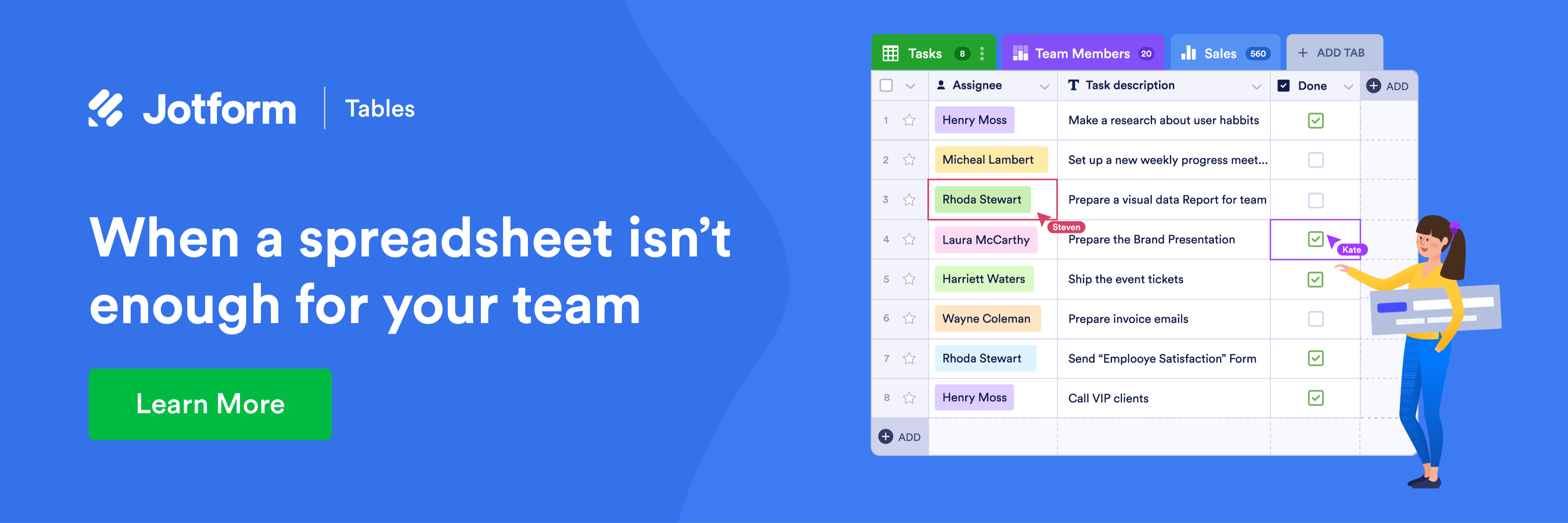



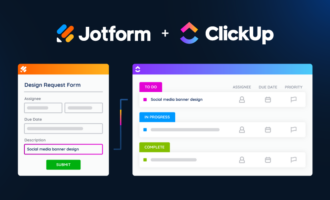












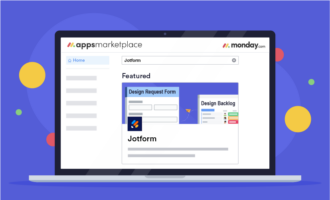
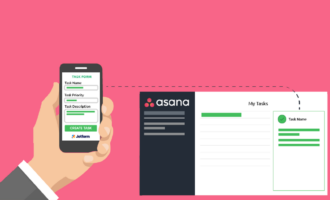










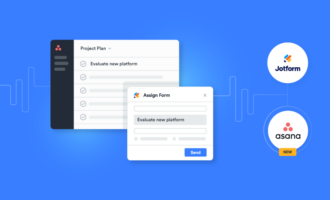
Send Comment: